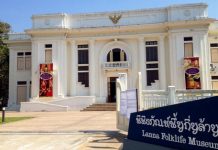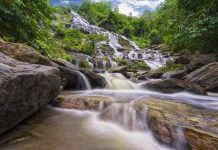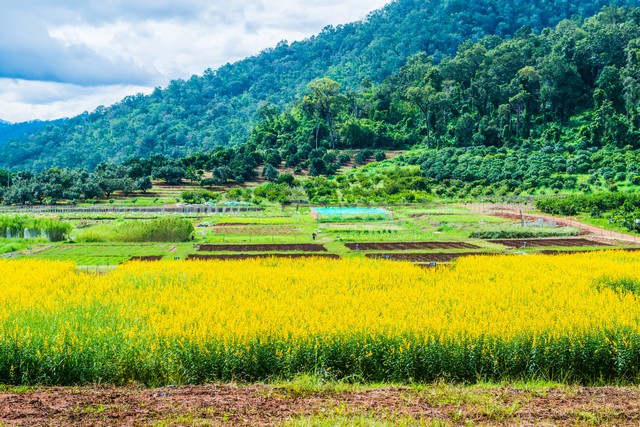
Royal Agricultural Station Pangda, the verdant land of exotic fruits and vegetables
A trip to go to Samoeng, a lovely district in Chiang Mai will not be completed without visiting Royal Agricultural Station Pangda. The place is another attractive sightseeing that similar to the hidden gem of agricultural wisdom. Every inch of the land is packed with the demonstration farms and nursery house of various species plants which becomes the valuable learning center to any interesting ones both farmers and public.
The Royal Agricultural Station Pangda locates at Samoeng district in Chiang Mai. The location is approximately 45 km from the city town that established since 1979 by HM King Rama IX. The King Bhumiphol with his purpose to help the hill-tribe people to have the appropriated place to live and work. The project introduced them the commercial plants that can offer them the long-term career with sustainable income. The farmers have been instructed any necessary techniques in cultivation included how to use the chemical appropriately and safely. Moreover, the project encourages the local to earn the most benefits from soil and water source with preservation conscience.
Royal Agricultural Station Pangda is another royal project that nestles in the shady nature of mountains and diverse species of trees that is a perfect place for relaxation and leisure, indeed. The vast land of the project is covered with the numerous demonstration farms of temperature vegetables and fruits; Mulberry, Seedless Grape, Passion Fruit, Dragon Fruit, for example. Also, other green and herbs such as Chinese Chives Flower, White Chinese Chives, French Bean, Pepper, Artichoke, and Asparagus for you t o see and field study.
About the Pangda Royal Agricultural Station
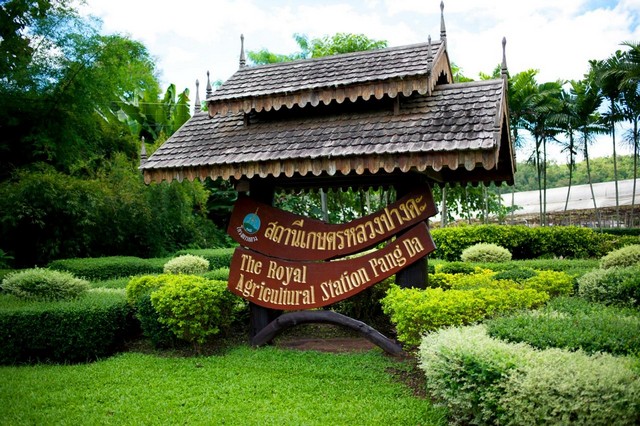
Royal Agricultural Station Pangda or known shortly as “Pangda Royal Project” is one of four agricultural stations under the administration of the Royal Project Foundation. The station serves as a learning center in plants propagation to any who interesting, including as the demonstration base for students and researchers. Moreover, the station encourages the local to use the land effectiveness based on natural preservation philosophy. 45 km from Chiang Mai town or about 50 minutes’ drive, the project is allocated into 2 sections which are;
- Royal Agricultural Station which serves as a research and development center of the tropical vegetables, field plants, small fruits, winter fruits, along with the responsibility in career demonstration, promotion, and development to the farmers.
- Research Center Som Pong Noi which serves as the research center, demonstration farm and propagation of disease-free orange.
Becoming the Royal Project
To settle the royal agricultural station, the Royal Project Foundation needed to seek for the right location with enough space to do the demonstration farming of temperature plants. And in 1979, the foundation chose a piece of land of the rice and winter grains farming station in Samoeng, Chiang Mai province as a new agricultural station.
Afterward, the increasing demand of the young plant, for that reason a new location with more space was needed. Then, the Royal Project foundation considered the piece of land nearby the Huay Pla Kang Reservoir under the Initiative of HM the King Bhumiphol that was completed in 1983 and it is not far from the previous site. The new place operated under the title “Pangda Royal Project Plants Propagation Center”. King Bhumiphol together with HRH Princess Maha Chakri Sirindhorn graciously visited the site to watch the implementation of the project at the first time dated 12 February 1987. And the president of the Royal Project Foundation, His Serene Highness Prince (Mom Chao) Bhisadej Rajani submitted the request to the king to rename the place as “Royal Agricultural Station Pangda”.
Later, on March 11, 1991, Queen Sirikit of Rama IX visited the project, and HRH Princess Maha Chakri Sirindhorn went to the site for the second time on November 20, 2004. And the princess revisited Royal Agricultural Station Pangda with the His Excellency S R Nathan, the former president of Singapore and his spouse dated January 20, 2005, which is the third time the princess goes over the site.
The Career Promotion and Development at Pangda Royal Agricultural Station
Agricultural study that the station develops and promotes the vegetable planting with 9 species of vegetables are Sweet Corn, Green Bitter Gourd, Small Eggplant, White Chinese Chives, Yellow Pepper, Pea Eggplant, Chinese Chive Flower, Red Pepper, and Lemon Grass.
And 6 kinds of fruits are Avocado, Grape, Cape Gooseberry, Sweet Passionfruit, Strawberry, and Fig, and 2 field plants are Red Kidney Bean and Black Soy Bean.
Moreover, the center also introduces and enhances the handicraft job to the local to do as part-time job besides the agriculture such as textile weaving, handmade textile bag, apron, grove, and shawl, etc.
What interesting planting at Royal Agricultural Station Pangda
1. Hemp and the Royal Project
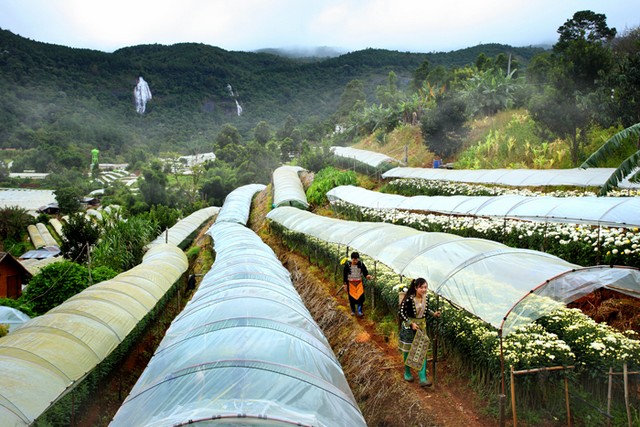
Initially, hemp was planted by Hmong, a hill-tribe people lives in Thailand. However, hemp is legally categorized to be an intoxicating plant as same as marijuana, thence it was stealing plant to grow at that time. Thereafter, Queen Sirikit of Rama IX was interested in the processing product made from hemp especially textiles, therefore the queen graciously commanded the concerned parties to study how to grow hemp appropriately and also promotes it to be the commercial plant of the highland in Thailand since 2004 (specifically the hemp with THC lower than 0.3%).
And the Royal Project Foundation plays a significant role to push forward hemp being one of the potential plants that make good benefit of income to the highland farmers. The fiber of hemp had various interests in term of handicraft such as clothes, shoe, bag, tote, and paper, for example.
2. Fig, the foreign fruit introduced by the king
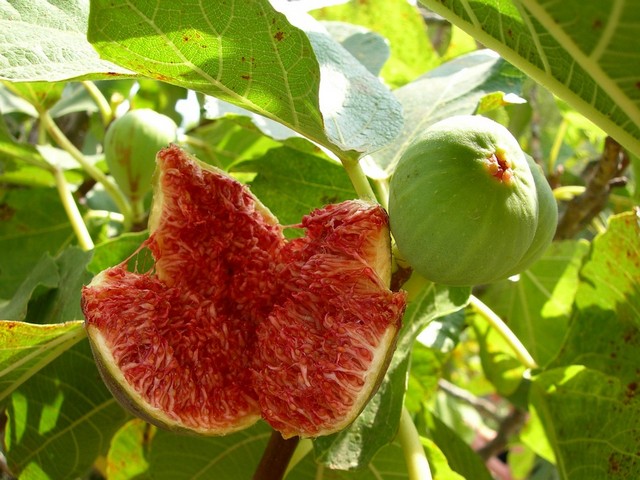
Another exotic fruit that is the belated King Bhumiphol’s favorite is “fig“, and the king also bestowed to the Highlanders to grow instead of opium. Fig was introduced and planted first time at Royal Agricultural Station Pangda in 1987. Mom Chao Bhisadej Rajani gave an interview and noted that “King Bhumiphol favors to collect the fresh ripped fig to eat. The king also mentioned to its benefits that it is healthy”.
Fig, currently becomes one of the captivating plants of the Royal Project which has been cultivated and researched to propagate and transfer to the farmers. Consequently, the farmers that turn to plant fig can gain appropriate revenue that makes their life to be better (the royal project purchase the qualified fig from the farmers at THB150 per kg in average).
Fig was introduced to Thais, and presently the healthy fruit is better known in general resulted in the size of the market for fig grow as well. It is not only the delicious and exotic taste of the fig but also its benefit for health to motivate the excretory system and prevent the Colonic Carcinoma. Fig can be able to eat in both fresh and dried, and we can make tea from its leaves, too.
Apart from many demonstration farms, Royal Agricultural Station Pangda also has a Club which provides accommodation, restaurant, and camping facility to service the tourists, as well.
3. Paulownia at Pangda Royal Project
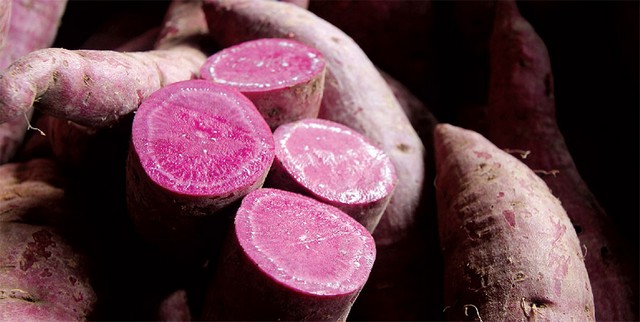
Paulownia is a native plant in China that generally grows in the southeast of the country both plain and on the mountain up to 2,000 m above the sea level. The plant propagated species by nature and expanded down to Vietnam and Laos. The Chinese know this plant for more than 2,000 years. And at the front of the guesthouse at the Royal Agricultural Station Pangda is a “Paulownia” tree that Queen Sirikit of Rama IX planted on March 11, 1991, and now it matures as a big shady tree.
After study and found that Paulownia taiwaniana is a fast-growing plant which was very interested in the Royal Project’s highland plant propagation as same as the Department of Forestry. Therefore, the project to study and research the highland plant cultivation started with the Paulownia as the primary species with other field crops – Barley, Rice, Ginger, and Coffee, included to Dendrocalamuslatiflorus also known as Taiwan Giant Bamboo.
The result is the field crops that are planted in the late year and harvest in the early of year when is the time of Paulownia shreds the leaves. Barley and Wheat, including coffee that all need the shade from the tree as “Baby-sit” to support their development, can be grown among the Paulownia trees based on the agricultural procedure very well without any negative effect.
4. Huay Pla Kang Reservoir under the Initiative of the King Bhumiphol

Not far from Pangda Royal Agricultural Station is a relaxing place that the tourist can visit which is “Huay Pla Kang Reservoir”. The vast land with more than 800 Rais of space is the project initiated by HM King Bhumiphol that the king would like to create weir to collect the water from two sources that nurture the life of residents and the royal project. The reservoir has been under responsible of the villagers to take care and maintain the cleanliness around the area to preserve humidity of the forest since 1983.
How to go to Pangda Royal Agricultural Station
The visitors can go to Pangda Royal Agricultural Station by car in 2 directions which are;
- On the highway route Chiang Mai – Fang, you drive to Mae Rim district and then turn left to the way to go to Mae Sa Waterfall. The total distance from Mae Rim Intersection to the Royal Project is approximately 38 km along the paved road.
- On the route Hang Dong – Samoeng, you head along the road and pass Samoeng Junction. Then, you head west in about 36 km. The path before Ban Mae Khanin is quite steep and slope, so be cautioned to drive carefully, it is pavement all through the way, though.
Note: Both directions are limited to big coach since they are the slope and tough road.

